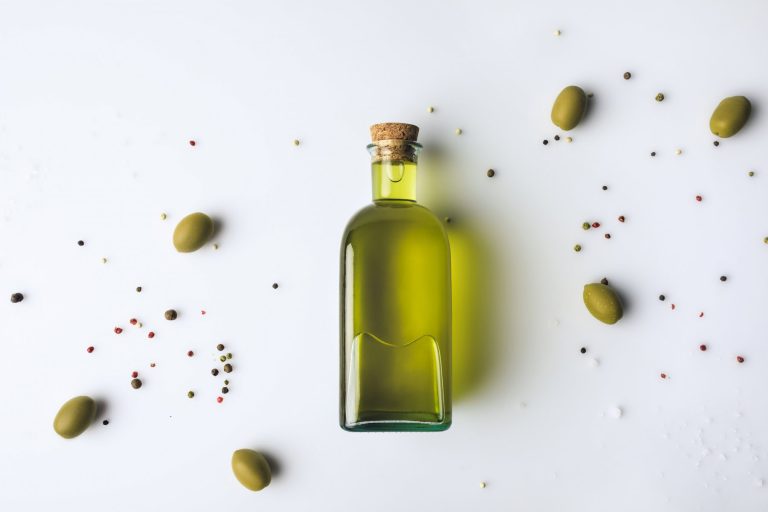Olive oil is a kitchen staple that many of us rely on to add flavor to and cook our food. But in the past several years, studies showing that more than half of the extra-virgin olive oil imported into the U.S. is rancid or even counterfeit may have shaken your confidence, leaving you confused about what to buy and what you’re getting.
At its core, olive oil is pretty simple: It’s the liquid obtained by pressing whole olives. But, like with any food product, there are differing degrees of quality and manufacturing that can affect the end result. Why does the quality matter? According to Tom Mueller, author of the book Extra Virginity, rancid and counterfeit products are often very low-grade oils that don’t “give you the taste of the health benefits that extra virgin should give you.”
And while efforts have been made to ensure quality products are being shipped to and stocked in grocery stores, there are some best practices to keep in mind when shopping for quality olive oil. Use this buying guide to ensure you’re getting the best product possible.
MORE: What you need to know about the Pegan diet, the latest eating craze
How to buy good olive oil
- Look for a dark glass bottle or a metal canister. Clear bottles do not indicate an inferior product, but the darker bottle will help to prevent your olive oil from going rancid. Amber and green bottles help to block UV rays, which can deteriorate olive oil over time, making it go bad.
- Select virgin olive oils. This oil is the purest form and is not adulterated and blended with other oils, ensuring you have the flavor and health benefits of pure olive oil. And you don’t have to purchase extra virgin to enjoy olive oil in your home; extra virgin simply has a stronger flavor, and while that can indicate higher quantities of the healthy compounds in olive oil, any pure olive oil can be welcomed into your kitchen.
- As a follow-up, be sure to read the labels carefully. Many olive oils are blends from different countries, and that is just fine for a quality oil. However, the label will also indicate if the oil has been blended with an inferior oil, which you’ll want to avoid. You can also check the label for a quality seal. There are many certification bodies that each have their own standards, but that can be an indicator that the oil was tested and tasted.
- Buy a bottle that is the right size to use up within a few months of opening. Olive oil is a natural product, and it will deteriorate once opened due to exposure to oxygen, light and heat. While an unopened bottle will remain good for up to two years, once opened, the oil is only good for a few months.
MORE: Are ‘superfoods’ actually superior to other healthy foods?
The benefits of olive oil
There have been numerous studies on the health benefits of olive oil, and the good news is that you can receive those whether you use the oil raw or for cooking.
- Olive oil contains antioxidant compounds that may even fight the free radicals associated with cancer, and it contains cancer-fighting compounds such as squalene and terpenoids.
- Studies show that olive oil may protect against cardiovascular diseases and reduce LDL cholesterol, making it a healthy dietary fat to support your overall well-being.
- A study on the classic olive-oil-heavy Mediterranean diet showed that it improved cognitive function, especially in comparison to a low-fat diet.
- It tastes great. Seriously! Olive oil is a sensory delight that adds rich depth and flavor to salad dressings and sautées, and even just as a fresh drizzle over a plated dish.
Now that you have some high-quality olive oil, use it to make something delicious. Check out our truffle bacon recipe below.









